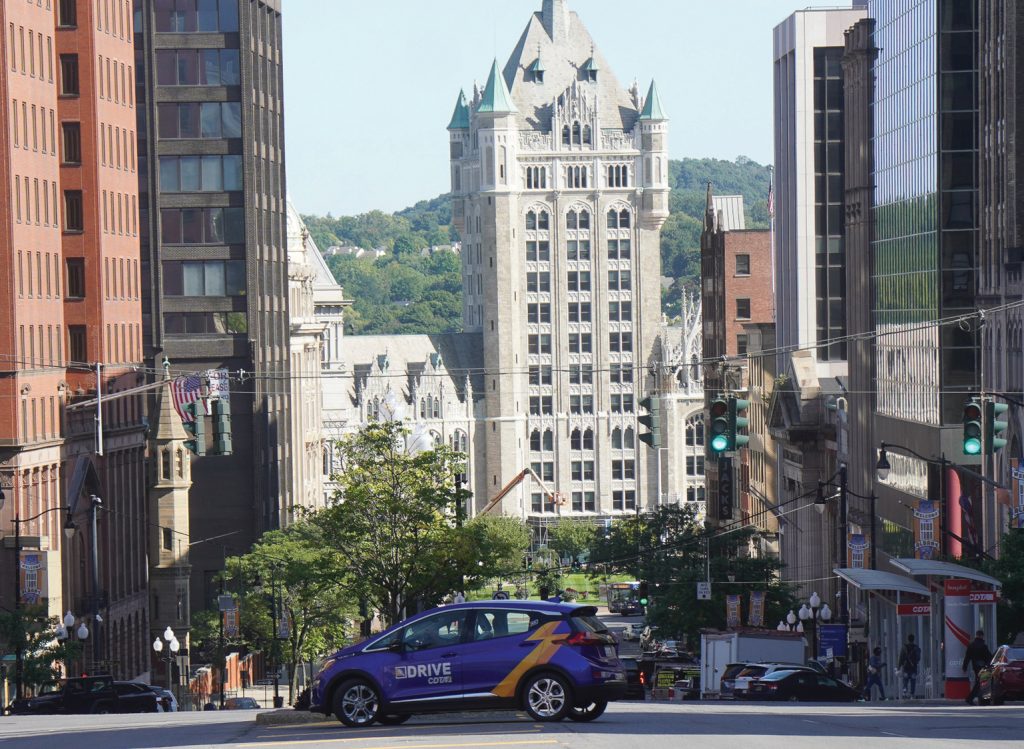CDTA: Beyond the Bus
By Carm Basile | 10/9/2023
CARM BASILE
CEO
Capital District Transportation Authority
Albany, NY
Innovation and creativity at the Capital District Transportation Authority (CDTA) in Albany, NY, has driven our focus beyond a traditional bus company. In our case, a carefully crafted, board-directed vision has transformed us into a regional problem solver, a thought leader and key part of the area’s economic development engine.
This shift did not happen overnight, and it wasn’t easy. It has taken many years to accomplish, and it happened gradually, as we proved ourselves to the communities and people we serve. They had to believe in us and needed to be part of what we were doing. It required public outreach and attendance at meetings and events that sometimes did not seem to be aligned with what we were doing or where we wanted to go. The process was slow as we sought a place at the regional development table. That seat came when we positioned CDTA as a public asset and a valuable resource to the region. This work signaled a new way for the Capital Region to think about mobility.

As our work matured, we integrated mobility options and provided people with new and meaningful choices in the way they travel. This includes upstate New York’s only BRT service, north of the MTA in New York City. We have a third line beginning this fall, which will make 40 miles of BRT in total. The introduction of on-demand service called FLEX, ownership and management of a regional bikeshare program called CDPHP Cycle! and the introduction of a new electric carshare program, DRIVE, round out our offerings.
We believe that providing an affordable mix of mobility solutions for customers has become more vital, as workforce commute patterns shift and as consumer inflation has reached record highs. While we are encouraged by ridership trends, our progressive plan to connect people with a variety of mobility options comes at a time when consumers are demanding more value.
Our Universal Access program is creating growth and value across our service area, which includes the Capital city of New York, serving as a conduit for community connections, a workforce recruitment and retention benefit and strong customer value. We have elevated the role of transit service by developing partnerships with every college and university in the region, with dozens of major employers and with civic organizations. We have wholesaled transit access to these organizations under the heading of Universal Access. Partners access the CDTA route network free of charge, using employee or student ID cards. Ride rates are agreed upon and access to the system is guaranteed for the duration of the agreement. The Universal Access program accounts for 30 percent of all boardings and revenue, making it the most popular way to use our system.
Universal access agreements, brand development and community positioning are supported by a continued rebound in ridership. We are leading New York State with a return to healthy ridership statistics. Our ridership count for the fiscal year to date is 18 percent more than the same time last year and it is 100 percent of what it was before the pandemic brought everything, including ridership, to a halt. Our recovery is fueled by a well-designed route network that provides what customers want most: frequencies and span. It is supported by the development of new Universal Access accounts, 40 in all, which generate a steady stream of requests for more service, more options and better connections. The request line outpaces our ability to respond, given the need for more resources. We are balancing this demand with the human resource realities that all employers face. With the request for more service came the addition of two new counties in just the last year, bringing us to six counties within our service area.

Our customer service statistics are outstanding, and we receive high grades from community leaders in stakeholder outreach. We regularly survey groups to make sure we know where we are and what we need to do to improve. Communication and conversation are an embedded part of our master plan.
Our focus on being more than a bus company has opened opportunities and helped fuel our recovery after the pandemic. As we look for ways to develop our role as a mobility provider, we will continue to be a community partner and integrate what we do into the expanded region that we serve. Our goal is to matter as much to people who don’t ride with us as to the people who ride with us every day.